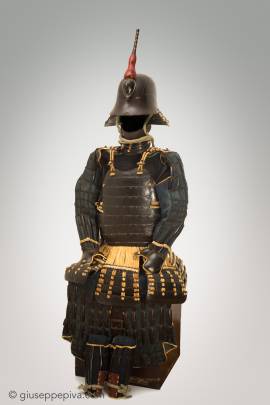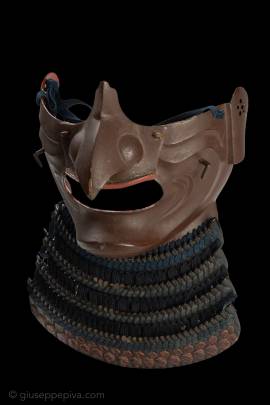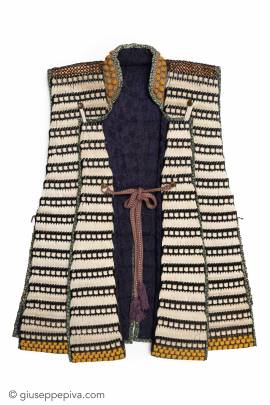Armor of Sansai typeEarly Edo period (1615 - 1867)17th centuryInscribed in various parts: Nishimura Kiyomune Hosokawa Sansai (or Tadakoi 1563 - 1646) was a successful general; he modified the traditional gusoku creating the model now know under his name. These are simple and very practical armors, that reflect the elegant artistic sensibility of Sansai, who was also a tea ceremony master.The kabuto is of Etchu (zunari) type; the cuirass in iyozane maru, often covered in lacquer. The mask is always an hanbo and sode are not...
WORKS FOR SALE
Samurai mask shaped as a TenguMid Edo period (1615-1867)This menpō presents some features, such as the nose shaped like a beak, which suggests that represents the face of a Tengu. The Tengu are mythological creatures of ancient Japanese tradition identify both as kami (gods) and as yokai (demons). They are usually represented as birdman with a long prominent nose or, as in this case, a beak. The mask interior is lacquered and the iron yodarekake is made in four kiritsukezane plates.On this page is a comprehensive glossary of common...
Edo period (1615 - 1867)19th centuryIn order to emphasize their presence and dignity at military reviews or embassies, high-ranking samurai would wear on their cuirass a jinbaori, a knee-length sleeveless surcoat. In order to highlight the individuality of the samurai wearing it, the jinbaori, which first came into usage during the Momoyama period, is designed of flamboyant colors and materials. Conversely, those made using the techniques commonly employed for armor are very rare, including the one, still from the Momoyama period, preserved at the...
Copyright © 2016 - giuseppe piva - VAT: 05104180962










